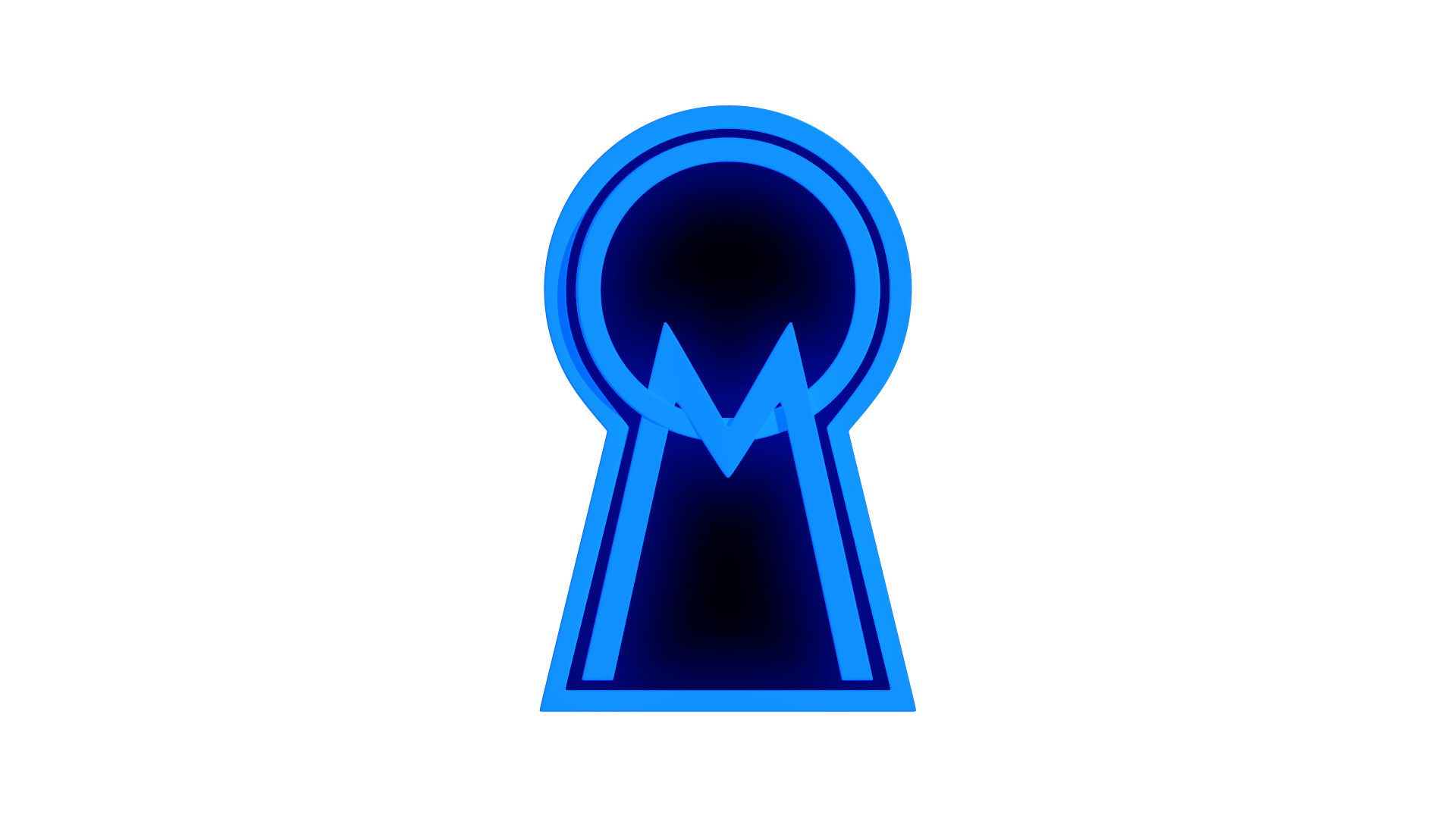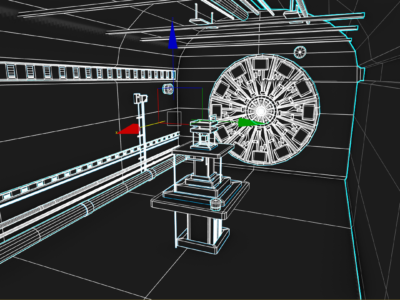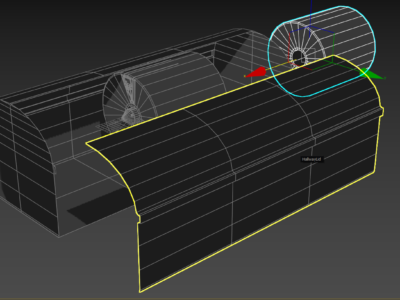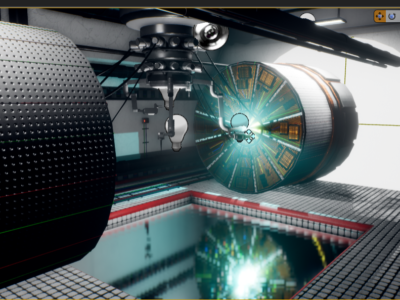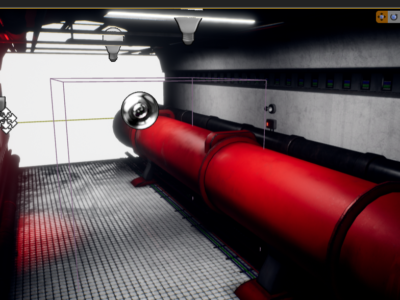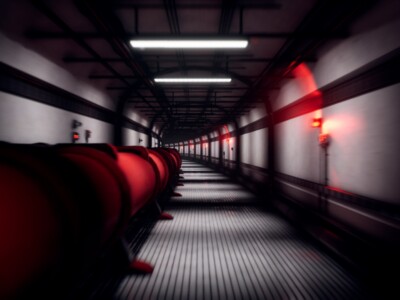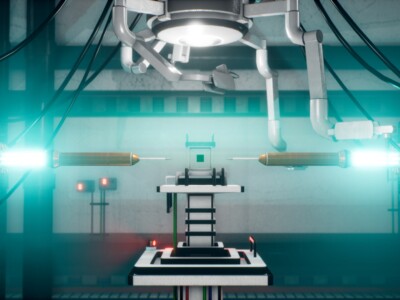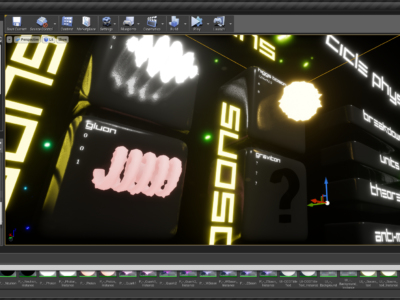
Cloud Chamber is a puzzle, collecting and a literal physics game.
The player utilises the latest advanced particle accelerators, other high energy equipment and some new tech just over (and significantly) over the horizon to create the very building blocks of all things!
From the simplest compound particles to the most complex heavy elements the player can delve into the sub modular and even quantum level to set up and execute advanced experiments colliding an increasing range of particles to create more and more interesting subatomic structures.
As well as extending their skill, entity library and resource base, the material and energy created by these experiments has high value, both to the scientific and commercial community and in some cases to somewhat shadier organisations (anti matter being a very sought-after commodity on the dark web …. apparently).
The game is true to the standard model of physics but also incorporates many of the latest theories and ideas in the field and one or two speculations of the authors.
Ultimately the player seeks to literally gain ultimate control over the building blocks of the universe and the laws that govern their interaction. Starting with the quantum mechanics at the borders of our understanding, mastering the life-giving fusion furnaces of stars and being able to create the complex novel materials that are absolutely priceless.
Of course, the various scientific, commercial, governmental, and ‘other’ funders of the players endeavours are not going to give them a blank cheque until their abilities and output are proven! Thus, the player must start at the bottom and gradually build up their modest lab into a CERN level institution allowing them to smash atoms and particles together with tremendous amounts of energy and harvest the results in increasingly sophisticated and effective ways.
Ultimately the player must create the Atlas Prime an incredible space-based Dyson ring that will unlock the universe, manipulate time itself and make the player the master of reality (as we know it).
The main play takes place initially in the λ-Cube a three-dimensional subatomic space where the player can enact the initial experiments to explore the structure of matter and create it anew. Spectacular graphical effects are enhanced by rich soundscapes and music to engage the player and drive them to even more rewarding and greater creations.
Outside the λ-Cube (and other more advanced ‘spaces’ as the game progresses) the player can manage the financial and technical aspects of their lab, institute, research organisation, global installation and eventual solar system wide project.
The player builds up a library of discoveries, techniques and structures, each level unlocking another more complex set of challenges and achievements. They are assisted by Collette an advanced AI always ready to find the information requested and point the player to a vast array of resources both in and outside the game.

Game Details
| Game Name | Cloud Chamber |
| Genre | Puzzle, collecting and physics game. |
| Game Perspective | 3D Third Person. |
| Number of Players | One |
| Game Setting | ‘The Lambda Cube’ and other colliders, Laboratories and other scientific installations. The Virtual Knowledge Space of Collette. |
| Game Summary | The simulation of the quantum world and the acquisition of knowledge and materials. The player has a set amount of time and a selection of tools available to them to discover the particles found in the standard model of particle physics and its linked theories. Later they can synthesize atoms to sell for large sums of money and upgrade the tools they have at hand. The end game is to complete the standard model and the entire periodic table allowing the player unlimited control over the quantum world. |
| Game Objectives | 1. Avoid quantum destabilisation, the more the player messes with the quantum world, the weirder and more dangerous the world becomes. Leading to an end game if they fail and push the limits too far. 2. To complete the standard model! 3. Complete the periodic table! 4. To build the Atlas Prime Dyson Ring Meta-Accelerator. |
| Look and Feel | In the playing space, multiple visual styles. From simple ‘classical mechanical’ views to full fractal representations. |
| Other Graphical Aspects | High tech interfaces, 3D cut scenes and graphics, Virtualized Meta Human Collette face. |
| Sound Aspects | Multiple Music Soundtracks Sound effects in the collider space. Voice actor for Collette and others Advanced sound visualisation. Incidental sound effects. |
| Target Platforms | PC, Xbox, PS5, IOS and Android. Handheld game full version. |
| Human Interface Controls | Keyboard, Mouse, Game Controller, touch screen. |
| Target Age Range | 8+ |
| Development Technologies | Unreal Engine Five C++ |
| Advanced Development Requirements | AI interactive voice recognition interface. |
| Secondary Deliverables | Additional DLCs providing access to other types of matter, possibly compounds and even bio matter. |
Some Key Features
| Player builds their own colliders, maintaining and upgrading them, and moving to more advanced particle accelerators, that allow more complex experiments and progression through the game. |
| The lambda cube, is the advanced technical object the player’s collider is built around allows the player to collect what they create and sell it legally or on the illusive black market. |
| Advanced and awe-inspiring visual effects including the collision and creation of atoms, particles, charge, spin, quantum mechanics, SU1, SU2 and LI groups |
| The Game is based on the real-world historical models of particle physics and it’s discoveries. For example, the player starts with a low powered linear accelerator only capable of smashing some hydrogen together. |
| Particle accelerator upgrades provide a range of customizable routes and options for their experiments and thus choose their own path of discovery, balancing investment with discovery. |
| Collette a unique interactive AI can also be upgraded and utilised both to guide the player and provide access to new options and capabilities. |
Main Game Mechanics
| 1. Real and slowed time, time limited experimental set up, requiring special awareness and hand to eye coordination. |
| 2. Calculate, set up and launch experiments with micro adjustments as the experiment runs. |
| 3. Templating of tactical options and designs. |
| 3. Information Management and research, resource base and starting template build up, chain experiments. |
| 5. Increasing complexity and capability and challenges with risks of creating cascade failures or creating dangerous products that will end the game and maybe even the world. |
